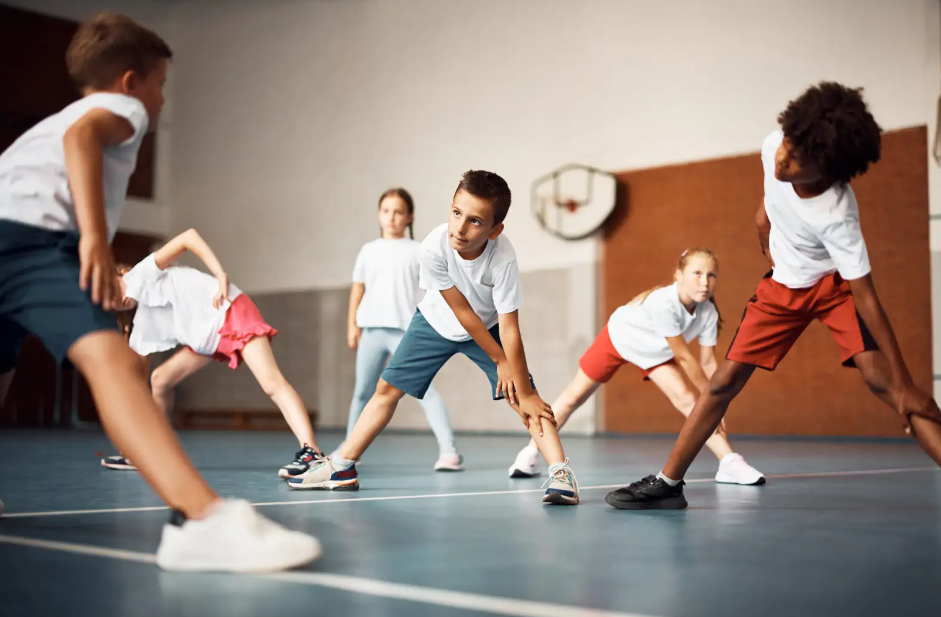The Decline of Canada’s PE Programs and the Impact on Student Health

Previously published in Volume 82, Issue 1
With screen time and sedentary lifestyles on the rise, and 1 in 3 Canadian children falling into the category of obese or overweight, there is genuine cause for concern in Canada. What's equally troubling though, is the very people best qualified to address the problem—physical and health education specialists—may be in shorter supply in the years to come.
Fewer PHE specialists
According to a 2006 study in the PHE Journal, Canada’s classroom climate has been challenged since the 1990s, mostly due to budget cuts. As a result, there has been a decreasing number of physical education specialists in elementary schools, according to the study. The number of specialists in Ontario schools has dropped in the past three years from 45 per cent to 42 per cent with a number of them only being employed part time, according to a 2015 report by the organization People for Education.
In fact, 50 per cent of schools haven't had specialists for more than a decade, and the trend is consistent with the decreasing number of physical education degree programs offered at Canadian Universities. Queen’s University, for example, recently announced they will be suspending new admissions to their physical education degree program, citing a 15 per cent drop in enrollment over the past five years, according to a Toronto Star article.
Youngest students need expert guidance
Elementary school years are a formative time for teaching students how they move and work with their bodies, according to Lynn Randall, an associate professor in the faculty of education at the University of New Brunswick, but the knowledge isn’t as innate as one might think.
“There’s been some research to suggest that generalist elementary school teachers don’t feel confident enough to do that,” said Randall. “It’s not that they don’t want to, it’s not that they don’t value physical education…but they don’t know how to go about doing that in what can be a chaotic environment of about 24 kids running in 24 different directions.”
As specialists are used to the chaotic environment, Randall said, the teachers play a significant role in developing a quality physical education experience that leads to future healthy habits.
“How we learn to move our bodies and what they can do allows us to interact with our environment in a whole host of ways, and that interaction allows us to participate in so many more events with confidence,” she said. “It just adds to our whole being.”
A national problem
After teaching physical education classes in elementary schools for a number of years, Calgary-based elementary school teacher Jane Mowbray said the decline in post-secondary physical education programs is apparent in Alberta as well.
“When I went through school I got my degree in physical education first, so when I did my [Bachelors of Education] after, I already had all of the courses to teach phys ed,” she said. “But the emphasis shifted here and the phys ed program at the University of Calgary shut down a number of years ago, so I don’t know how teachers will learn how to teach phys ed, and it's concerning to me because the stats show we have some of the unhealthiest kids.”
Kindergartners less interested in movement, play
Debbie Howes, a teacher in London Ontario, said she’s noticed changes in students' willingness to move and play, even at the Kindergarten level.
“Students aren’t as enthusiastic as they used to be with the same kind of energy level,” she said. “And when you bring equipment out with children, a while ago they would have a lot of these things at their house—they’d be playing out in the street with a basketball or something… Now kids tell me they’ll go home sit and watch TV or go on the computer, so they might still have equipment, but they’re not using it as much.”
Revamped health education curriculum in Ontario
In an effort to improve health programs in schools, the Ontario government issued a revamped physical and health education curriculum in 2015. While it was praised by the Ontario Physical and Health Education Association, stating it “stands to be the single largest health promotion intervention this province has ever seen,” other organizations, such as PHE Canada are concerned about how much of it will actually translate into classrooms.
“Even though there’s the institutional support where the minister of education says ‘we support physical education,’ it’s not translating into action,” said Jennifer Forrest, communications manager for PHE Canada. “And their current strategy to boost math scores is an example we can point to, to how they’re not thinking about the benefits that physical activity can have in other areas of overall achievement.”
The strategy Forrest is referring to is the minister of education’s $60 million plan to boost math scores in Ontario’s elementary schools, which was announced in April. The decision was spurred by a 7 per cent decrease in provincial math test scores over the past five years in Grade 6, and 4 per cent in Grade 3. On a global scale, Canada scored 13 out of 65 countries, which is better than 80 per cent of the countries measured. But in a 2014 study conducted by Active Healthy Kids Canada, students received a “D” Grade compared to 14 other countries for overall physical activity.
No focus on overall wellbeing
Randall expressed frustration at the continued sole focus on math score improvement and notes policy decisions continue to be based on single grades rather than the overall well-being of students. As a result, only 10 per cent of students get the recommended hour of activity every day, according to a 2015 report by People for Education. Time is also often cut from phys ed classes in order to make room for more math and literacy teachings.
“You’re sending messages to kids at a really early age that what’s important is reading and math, and what you’re really telling kids is that moving isn’t important…that’s the unsaid message,” Randall said. “And then we turn around and say get off the computer and go move. So we need to be careful.”
Specialized health and sex education
The new health and physical education curriculum also outlines new concepts to be brought into teaching sex ed, yet another aspect of the course that is put entirely on the shoulders of the generalized elementary school teachers to properly relay to students. Péter Balogh, a professor of women and gender studies at Carleton University, echoed Forrest’s concerns surrounding a focus on policy and a lack of action. He said not providing human resources for teachers to properly teach new concepts such as gender expression hinders learning.
“I think the new curriculum is great, it really touches on concepts that I wish I could’ve had as a child,” he said. “But these ideas are discussed if the teacher wishes to and is capable of it, so it’s to the degree that the teacher is able to…but you’re first matter of business is to do no harm to the students, so it’s very individual…I would be very overwhelmed by this if I were a grade 1 teacher, on top of everything else you have to do in a day, which goes back to not having that physical education teacher there.”
Excessive caution hurting our kids
Both Howes and Mowbray said the number of safety precautions that have been introduced in physical education classes and school yards over the past few years have been dramatic, impeding the students’ abilities to achieve the movement foundation Randall had emphasized as being integral to elementary school physical literacy. Climbing bars, ropes and other forms of gymnastic equipment have also been completely removed from schools, a change Howes noted only occurred within the last 20 years.
But with the increased demand on teachers to be vigilant watch dogs in physical education classes and on the school yard, there aren't the resources to meet the demands.
“Class sizes are much bigger too,” said Howes. “So resources aren’t quite the same as they used to be.”
Mowbray also said it’s up to the parents to implement playgrounds in the yards of newly built schools, resulting in only some schools having them in Calgary. Her 8-year-old school—ranging from Grade 5 to Grade 9—for example, doesn’t have one, but they do have a fitness centre.
“But 10 year old kids don’t need a fitness centre, they need to play,” said Mowbray. “So it’s like we’re trying to make these mini adults.”
Parents need to be involved in advocacy
In response to Queen’s University suspending their physical education program, PHE Canada published an editorial, citing targeted funding as a way to increase resources for and the number of specialists in school. The concern for student involvement and advocating for the proper resources in physical education classes, however, should start at the base level with parental and organizational advocacy Forrest said.
“When kids are failing in math, their parents are involved and concerned. If the same student comes home with a failing grade in physical education class, the parent probably isn’t going to be that concerned,” she said. “So the fact that more people aren’t outraged by what’s going on shows that something needs to be done.”
Want to take action?
Write a letter to your provincial minister of education, encouraging them to support the development of physical and health education specialists for our children.
Make the most of social media. Share articles about the topic, lobby on LinkedIn, and tweet your concerns using #PhysEdMatters.








